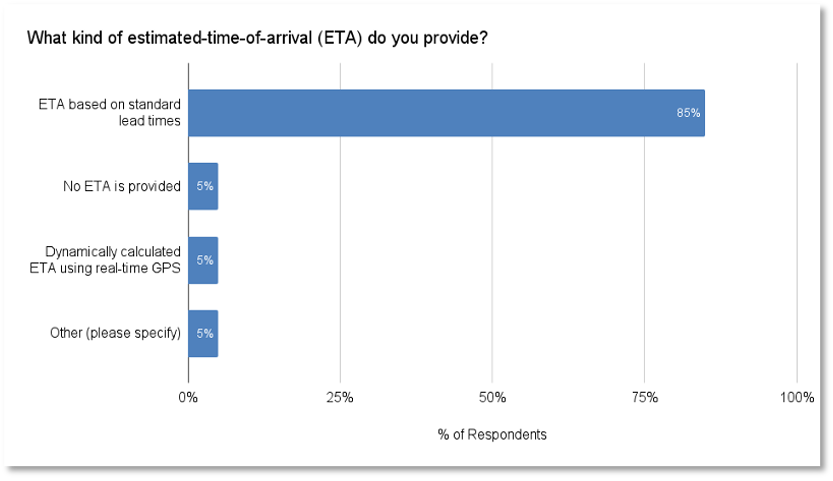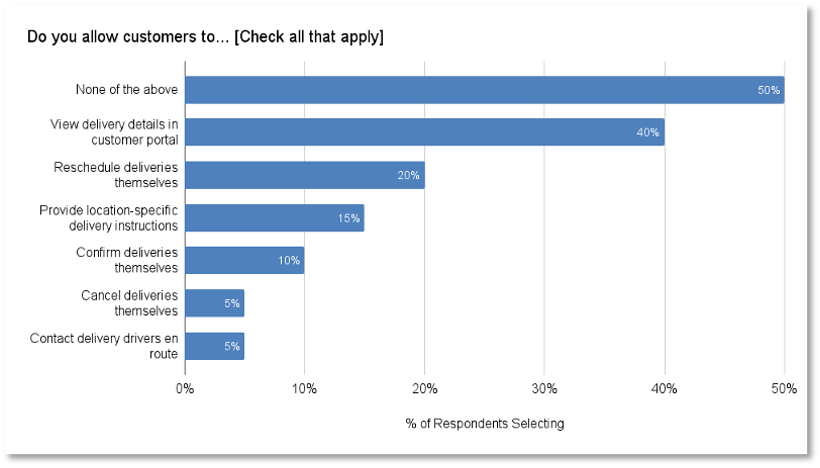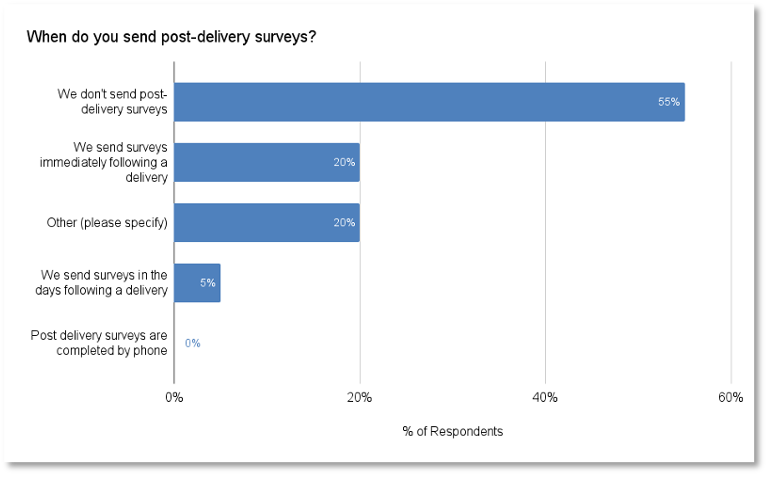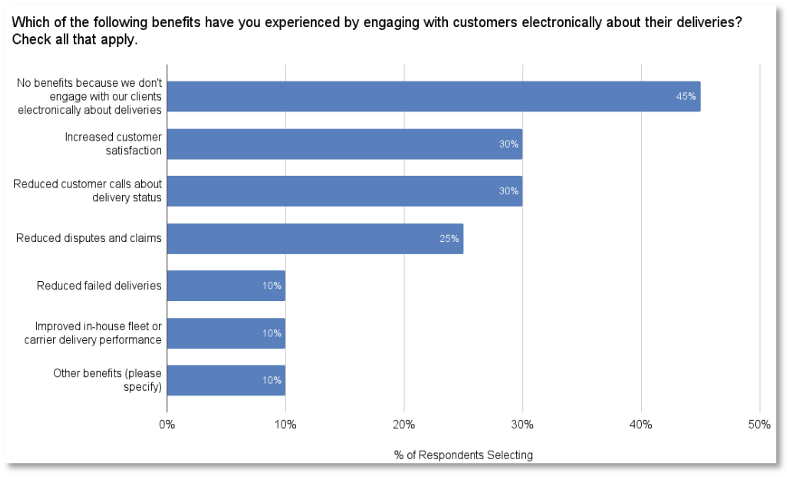
Photo: iStock.com/tsingha25
The Role of Customer Engagement Technologies in Enhancing Deliveries
In the fast-paced world of logistics technology, there’s an often-overlooked aspect: the customer. While systems focus on “jobs,” “orders,” “deliveries” and productivity, the real person at the end of the chain can be missed. The logistics industry, which encompasses the intricate web of processes involved in moving goods from manufacturers, distributors and retailers to consumers, is no exception.
For both B2B and B2C companies, everything can go well at the front end of the sales process, but a poor delivery experience can quickly negate an initial positive customer experience. This is why digital customer engagement has emerged as a pivotal factor in maintaining a competitive edge, by improving the delivery experience, capturing customer feedback and reducing delivery costs.
Customer engagement is a process that transforms how you interact with your clientele throughout an order’s journey, from placement to post-delivery support. It’s about building relationships and enabling customers to take action through their preferred channels. A positive customer engagement strategy not only improves customer retention; it also generates valuable feedback for process refinement to enhance delivery operations and reduce costs.
A Missed Opportunity
A recent study by Descartes with supply chain and logistics executives on the role of electronic customer engagement during the delivery lifecycle showed that many companies are missing a huge opportunity to improve their delivery experience.
While providing an estimated time of arrival to customers is quickly becoming table stakes, most survey respondents provide it based on standard lead times, with only 5% indicating that they dynamically calculate ETAs using real-time GPS (see Figure 1). Standard lead time has been a base expectation for years, and is certainly not a customer experience differentiator. Missing here is the value to customers in terms of how they manage their businesses when the lead time is more precisely measured than in days. For example, several distributors in the building materials industry provide their contractor customers with real-time ETAs to help them optimize crew utilization, by knowing exactly when materials will arrive at the job site.
This is consistent with another Descartes study, which examined delivery personas, finding that delivery precision scored higher than speed for a certain type of customer. For some customers, having a time-definite delivery based on accurate information is more valuable than having a faster delivery.
Figure 1: Types of ETAs provided

Source: Descartes/Indago Research
The Power of Self-Service
When asked about offering self-service options to customers, such as the ability to access delivery details on demand in a customer portal or reschedule deliveries, sadly, half of the respondents indicated they do not equip customers with any technology-based capabilities to do anything themselves about their deliveries. Only 40% allow customers to view delivery details in a customer portal; with respect to customer self-service actions, the ability to reschedule deliveries was the highest result (20%), followed by provide location-specific delivery details (15%), confirm deliveries (10%) and cancel deliveries (5%) (see Figure 2).
Figure 2: Self-service delivery options provided to customers

Source: Descartes/Indago Research
When self-service isn’t available, where do customers go to make delivery changes? Your call centers. If there’s one way to dramatically reduce call center costs and increase customer satisfaction, it’s with self-service customer engagement solutions.
An Untapped Avenue
Using a customer portal pre-empts questions so that customers don’t resort to calling your support team. In addition, there’s no need to phone every customer to ask for feedback, as the process of soliciting responses post-delivery can be automated. Some customers might actually hesitate to engage directly over the phone to relay their concerns and, oftentimes, the longer the time span between requesting a response and receiving it, the less accurate the information becomes.
Timely customer feedback is important for any business to provide a clear window into what’s working for your customers and what isn’t. Feedback can help you cut out the guesswork, so you can make changes that address customer concerns and create more positive delivery experiences, while enhancing delivery performance and lowering the associated costs.
Sadly again, 55% of respondents said they do not currently send post-delivery surveys, and only 20% said they send them immediately after delivery (see Figure 3). In essence, 80% miss the opportunity to gauge customer satisfaction during the most pivotal moment. If there ever exists a prime opportunity to capture details about a mediocre delivery experience, it’s immediately after the delivery and it’s managed proactively.
Figure 3: Timing of post-delivery surveys

Source: Descartes/Indago Research.
When the only way to know if a delivery experience was negative is for the customer to call customer service, then too many companies are missing a crucial touchpoint with the greater number of customers who silently go elsewhere for future purchases. Even if you don’t handle the delivery directly, the customer still holds you accountable for a poor delivery experience, whether it’s your fleet or a commercial carrier — and you need to know the good or bad immediately after. This is why surveys are so important — to help reduce customer churn and improve delivery performance.
Electronic Customer Engagement
The companies that do engage with their clients electronically about deliveries are benefiting in many ways. These include increased customer satisfaction (30%); reduced customer calls about delivery status (30%), disputes and claims (25%) and failed deliveries (10%); and improved in-house fleet or carrier delivery performance (10%) (see Figure 4).
Figure 4: Benefits of electronically engaging with customers about their delivery

Source: Descartes/Indago Research
Customers value the ability to track their orders in real time. Companies that implement customer engagement software can easily provide customers with accurate delivery timelines and notifications, along with enhanced communication. Through data analysis and insights, customer engagement tools also enable retailers or their logistics partners to offer personalized delivery experiences tailored to individual customer preferences.
The knock-on effects don’t only benefit customers but also enhance driver experiences. By providing drivers with accurate delivery information, optimized routes and effective communication tools, their efficiency and job satisfaction increase. Seamless communication between companies, drivers and customers also leads to fewer misunderstandings and improved overall service levels.
Closing the Loop
For B2B and B2C companies alike, customer engagement is about closing the loop of the delivery lifecycle, which becomes much more challenging if you don’t offer a scalable, automated way for customers to participate in the delivery experience and share feedback. The ideal customer engagement strategy uses existing information during the delivery process to add value and improve the customer experience in a way that creates a competitive edge. The next step is to allow customers to take action on this information themselves. To fully capitalize on these advantages, companies seeking to refine their delivery operations and provide exceptional customer experiences should consider exploring various customer engagement strategies, tactics and technologies.
Chris Jones is executive vice president of industry and services with Descartes.
